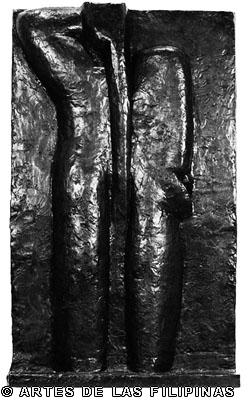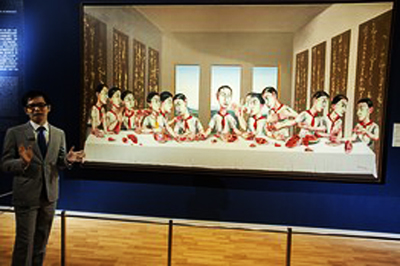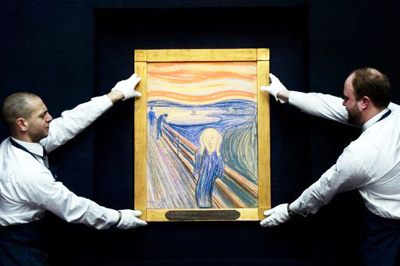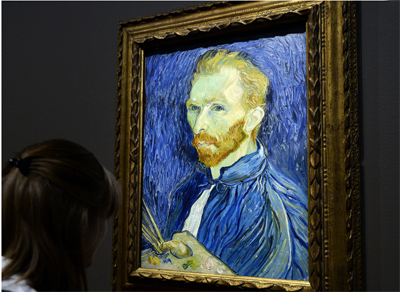AN OVERVIEW OF THE NOVELTY SONGS
IN THE PHILIPPINES
by: Marianne Aubrey de la Cruz
Novelty means innovation, originality, newness, freshness, uniqueness or even a product of creativity. Novelty songs are popular songs due to its novelty or uniqueness. These sound different from everything else being played on the radio or jukebox, and are usually intentionally humorous songs. It may take the form of a parody, a satire, or a comedic take on current events or fads. It usually defies the normal categorization of music; sometimes it may not even be music at all. One constant thing about it though, is that it uses unusual lyrics, subjects, or instrumentation, and most of the time in the Philippines, becomes unexpected hits. Despite that, however, novelty songs only bring their composers and singers temporary fame. Also, it may be the work of ‘one hit wonders’, some mainstream artists who do occasional novelties, and a few artists who have made successful careers out of novelty songs. It could be made by a singer famous in another sphere, such as comedians, actors, or even sports stars, too. The qualities of novelty songs are as follows: (1) funny / amusing lyrics and / or melody; (2) double meaning and / or senseless lyrics; (3) unique style, and (4) popular; known by the masses.
The history of novelty songs started in the late 1950’s, when it flourished up to the eve of the British Invasion, during the interregnum spanning the decline of rock n’ roll. It was created due to the lack of first-rate mainstream pop material, and due to the talented ‘geniuses’ Bill Buchanan and Dickie Goodman, two individuals who sadly had a predisposition towards artistic dementia. In the late summer of 1956, the duo hit upon the idea of splicing brief snippets of then current pop hits into a rather formless narrative which simulated onsite reporting of an alien visitation, and they called it “The Flying Saucer”. Other novelty songs at that time were: Sheb Wooley’s “Purple People Eater” (1958), Musical satire specialized and directed by comedians Stan Freberg and Peter Sellers, and Answer songs (the practice of recording a tune which either directly answered a question posed by an earlier hit or acted as a sequel, thereby capitalizing on the popularity of the original), which almost rivaled the balance of the novelty genre’s output.
During the 1960’s, song parodies became the leading form of novelty recording, as well as horror/science fiction themes. The significant drop-off in novelty tunes by 1964 was due to the upsurge in creative output enjoyed by rock music with the onslaught of British beat imports and the ensuing American renaissance about surf music, folk rock, soul, garage/punk, and other indigenous styles; The market for joke records, however, declined for a variety of reasons: First, in the 1950s there was a perceived children’s music market, the demands of which were met partly by singing cartoon characters. By the end of the decade, children had become ‘miniteenagers’; since then the appeal of cartoon groups such as the Chipmunks has been limited. Second, the comedy and music scenes diverged as comedians moved from radio to television. There were TV comedies aimed primarily at the youth audience (The Simpsons, Beavis and Butt-head), but the musical output of those programs and their central characters rarely received much airplay or generated many sales. Third, records that make fun of rock music lost their bite as rock became the dominant form of popular music.
Noncomic novelty songs either reflect nonmusical events (the British charts fill up with football-related songs during the World Cup competition) or show off new instrumental sounds (the Tornadoes’ 1962 hit “Telstar” was the first of many electronic novelties). Records that are treated as novelties remain as novelties—their commercial success leaves no mark on either pop history or the musicians concerned. But there are also songs that are at first treated as novelties and then become normalized. This reflects in part the way in which the media react to any new phenomenon—Presley made to sing to a real hound dog during an early television appearance, for example, or a TV producer’s determination to show Jimi Hendrix using his teeth to play “Hey Joe” on the guitar.
There are four main ways on how novelty songs are propagated: (1) On the radio, when novelty songs or rap numbers have very suggestive or downright gross lyrics, and deejays add insult to injury by following up with their own smarmy comments; (2) On the television, when bold stars advertise the songs in skimpy outfits on noontime shows. Extremely sensitive topics brought about by the songs are being discussed with mindless relish on morning programs as well, and TV hosts double-talk at all hours of the day. Dances “inspired” by copulative movements are also performed even by children because of novelty songs; (3) On various media, when a generally contemptuous and exploitative attitude is expressed in the “walang personalan” (nothing personal) and “trabaho lang” (just doing business) series because of novelty songs, and it makes the audience believe that it’s open season for all kinds of scandalous talk and behavior because “a person’s gotta live.”; and (4) In the community, when there is an inordinate emphasis on sexiness in many aspects of living, as well as an implication that it’s the “in” quality which everyone should work hard at developing, for both success and popularity, due to novelty songs.
So how exactly did novelty songs start in the Philippines? During the 1980’s, Yoyoy Villame started the art form with his songs about daily life added with humorous nonsensical lyrics and catchy tunes. His works include ‘Magellan’, a song about the Spaniards arrival in our country, and ‘Trapik’ or Traffic, a song about the traffic in the Philippines. His most popular song would have to be ‘Butse Kik’, a song about the names of the many Chinese stores he saw when he visited China. After that, novelty songs disappeared for a bit, then returned with a vengeance in 2001, with the hits like “Spaghetti Song” and “Bakit Papa” (Why Daddy) of the Sexbomb dancers and “Otso-Otso” of Bayani Agbayani. 2 years after was marked as the “Year of the Novelty Songs” due to the upsurge of the demand for the songs.
When talking about novelty songs in the Philippines, three people come to mind: Lito Camo, Max Surban, and Eddie Gil.
Lito Camo is the “King of Novelty Songs” in our country. He started as a TV singer and a “recording artist”, and in 2001, his song called “Bakit Papa” gained popularity. The hits “Spaghetti Song” and “Otso-Otso” soon followed. His other works include: Viva Hot Babes’ “Bulaklak” or Flower, Vhong Navarro’s “Pamela”, and Angelica Jones’ “Ms. Flawless”
Max Surban is one of the best novelty singers of the Philippines and the “King of Visayan songs”. He was born and raised in Cebu City in the southern part of the Philippines with one brother and four sisters, he finished high school at the “University of the Southern Philippines” and then took a machinery course at “Cebu College of Arts and Trade”. After that, Max worked for six months at the Visayan Electric Company. Since singing was his first love, he started to enter singing contests until eventually it became his career. At first, he sang ballad songs in big night spots in Cebu in the 1960’s until he decided to move to Manila. He sang at the Olongapo U.S. Naval base for one year and then at the “Seafront” in the U.S. Embassy Family Club for two years. He also joined a band as a vocalist and travelled to Vietnam and Japan. The first song Max recorded was a novelty song titled “Lolang Kunot” or Grandma with Wrinkles released by the Vicor Music Corporation. At first he was not interested in singing novelty songs because he was a ballad singer, but his curiosity about recording prevailed. He recorded “Lolang Kunot” and it became a big hit in just one week after it was released. He has traveled to countries like Norway and Austria, and his recording career continues to flourish until this day. Presently, he has made 33 albums, some of which have earned Gold and Platinum Record Awards. Max also has written songs for other local Philippine recording artists like Rico J. Puno, Pilita Corales, Yoyoy Villame, etc. Many of his songs are original, while others are musical adaptations in which lyrics have been changed to Visayan. His songs inject humor and reflect Filipino traditions especially those of the barrios, towns, and provinces.
His other works include: “Ang Manok ni San Pedro” or Saint Peter’s Chicken, which was about a man named Esteban who was murdered by goons. His soul went up to heaven where he met St. Peter at the pearly gates, and St. Peter was wondering why Esteban was there and realized that a mistake had been made, since his records showed that it wasn’t Esteban’s time yet. So St. Peter sent him back to earth, with a white rooster as a parting gift. When he came back to life, Esteban and his white rooster always won in cock fighting tournaments. This song became so popular that the story of Esteban was made into a hit comedy TV series with the same title. From that time on, Max was very busy recording and began to make a name for himself in the music industry. He also made “Baleleng”, a muslim song meaning ‘sweetheart’.
Eddie Gil is the former presidential aspirant has signed a recording contract with Alpha Music and is the surprisingly wonderful voice in the novelty song “Pelukang Itim” or Black Wig. The song is a fresh take on the 80s hit, “Bikining Itim” or Black Bikini, originated by Bert Dominic which was later revived by singer-comedian Blakdyak. Pelukang Itim, with words and music by Bert Dominic, smacks of self-deprecating humor from the controversial Mr. Gil. A few lines from Pelukang Itim: “Ang iniingat-ingatan ko, mawala itong peluka ko, na siyang panlaban ko, umulan man o bumagyo, kaya kayo’y mag-ingat dito sa aking agimat, peluka kong itim, na tangi kong lihim, for victory again” (The thing I cherish most, my wig that might disappear, is my weapon against rain or storms, that’s why fear my amulet, my black wig, my one and only secret, for victory again).
Comments about novelty songs:
“Sumisikat ang pop music kumpara sa Filipino classical songs dahil mas may pera rito. Papunta kasi ang pop sa masa dahil patok ito at madali ang pera. Ang Filipino classical songs tulad ng kundiman ang kinikilala ng ibang bansa bilang awiting Filipino subalit naglalaho na ito ngayon.” (Pop music becomes more popular than Filipino classical songs because it earns more money. Pop aims for the masses since it’s easy money, and it’s a hit with the people. Filipino classics like kundiman are the ones recognized by other countries as Filipino music, but it’s slowly dying.)
– Prof. Rachelle Gerodias, classical singer and teacher of Voice in Music.
“Walang itinuturong maganda ang mga novelty songs. Hindi nakatutulong sa pag-unlad ng awiting Filipino at kulturang Filipino ang mga ganung awitin. Ibig sabihin ng nakakapagpapaunlad ay nakakatulong sa pananaw, at pag-unawa ng tao sa kanyang sarili at kapaligiran. Kung refleksiyon ng pamumuhay ng mga tao ang awitin, naglalarawan naman ang mga novelty songs ngayon ng basura at mababaw na kulturang Filipino.” (These novelty songs do not teach any positive values. It doesn’t help in the promotion of Filipino culture and songs. Promotion means helping the general populace understand their selves and their own environment. If songs are the reflection of people’s lives, novelty songs depict only the shallow, garbage side of Filipino culture.)
– Noel Cabangon, Philippine folk singer
“Kung ayaw mong kumita ng pera, doon ka sa Filipino classical songs. Kung gusto mo namang kumita ng pera isipin mo ang mas malaking market: ang masa.” (If you don’t want to earn money, go for Filipino classical songs. If you do want to earn, think of the bigger market: the masses.)
– Prof. Rachelle Gerodias, classical singer and teacher of Voice in Music.









